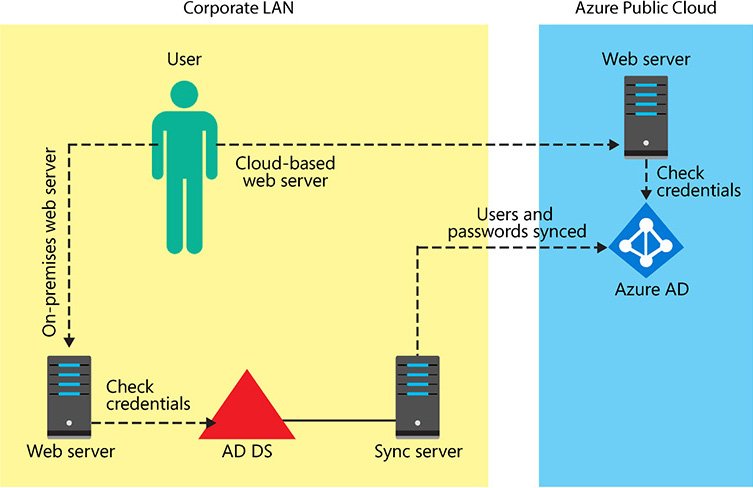Introduction:
Businesses are increasingly embracing hybrid environments—which combine on-premises and cloud solutions—in the constantly changing field of IT infrastructure. This change presents new difficulties, especially when it comes to maintaining user identities on various platforms. Organizations are using hybrid identity models—which seamlessly combine on-premises and cloud access—to address this complexity and give users a unified, secure experience. The importance of enabling a hybrid identity model and the essential tactics for its effective execution will be discussed in this article.
The Challenge of Hybrid Environments:
As companies take advantage of cloud-based and on-premises services, user identity management becomes an essential part of IT management. Because cloud environments are dynamic, traditional on-premises identity management solutions might find it difficult to adjust. Organizations run the risk of fragmented user experiences, ineffective user access management, and security vulnerabilities in the absence of a coherent identity strategy.
Benefits of a Hybrid Identity Model:
1. Seamless User Experience:
Users can access cloud and on-premises resources with ease when they have a well-designed hybrid identity model. Collaboration and productivity are increased because users can access data and apps from any location or hosting environment.
2. Enhanced Security:
Organizations can create a strong security framework by combining cloud identity management with on-premises identity management. Applying multi-factor authentication, conditional access policies, and identity protection measures consistently lowers the likelihood of data breaches and unauthorized access.
3. Adaptability and Scalability:
Businesses can easily scale their operations and adjust to changing needs with a hybrid identity model. Easily integrating new cloud services without jeopardizing the on-premises infrastructure is possible for growing organizations.
Key Strategies for Implementing a Hybrid Identity Model:
1. Unified Identity Platform:
Adopt a single identity platform that works in cloud and on-premises settings. Azure AD, a well-known example of a complete identity solution for hybrid scenarios, is offered by Microsoft.
2. Single Sign-On (SSO) Integration:
To allow users to access cloud-based and on-premises applications using a single set of credentials, implement single sign-on. This improves the user experience while also making identity management easier for IT managers.
3. Directory Synchronization:
Make sure cloud-based identity providers and on-premises Active Directory are synchronized with each other. The uniform updating of user attributes and credentials across all environments is guaranteed by this synchronization.
4. Conditional Access Policies:
To enforce security measures based on particular conditions, such as user location, device compliance, and risk level, implement conditional access policies. This gives sensitive data and apps an additional layer of security.
5. Regular Monitoring and Auditing:
Monitor and audit user activity on a regular basis to quickly detect and resolve security risks. This entails looking over access logs, examining authentication trends, and making use of identity management platforms’ identity protection features.
Conclusion:
Organizations navigating the complex landscape of on-premises and cloud environments must enable a hybrid identity model. Businesses can achieve a seamless and secure user experience by implementing a unified and strategic approach to identity management. Adopting a hybrid identity model is now not only recommended, but also necessary to remain resilient and competitive in the current digital era as technology develops.

Hybrid Identity Model FAQs
1. What is a hybrid identity model?
A hybrid identity model combines on-premises identity management systems with cloud-based ones. This allows organizations with a mix of cloud and local applications to manage user access securely and efficiently. Users have a single identity that grants access to both environments, simplifying login and access control.
2. What is the hybrid identity theory?
There isn’t a specific theory behind hybrid identity, but rather a concept. It acknowledges the reality of most organizations today: they use a blend of cloud-based resources and on-premise infrastructure. A hybrid identity model ensures a secure and unified approach to managing user access across these different environments.
3. What is an example of a hybrid identity?
Let’s say a company uses an on-premises Active Directory for local applications and also uses cloud-based software like Microsoft 365. A hybrid identity model would synchronize user identities between these systems. A user would then log in once and have access to both sets of applications using the same credentials.
4. What is hybrid identity in cyber security?
In cybersecurity, a hybrid identity model strengthens access control. By centrally managing user identities and access privileges across cloud and on-premise systems, organizations can reduce the risk of unauthorized access and data breaches.




Leave a Reply